Table of Contents
Introduction to Anaheim Green Chili Peppers
Anaheim green chili peppers are mild, versatile peppers perfect for adding flavor without intense heat. They're ideal for salsas, roasting, stuffing, and sauces. Here's how to use them in 10+ easy recipes, roast them perfectly, and choose the best peppers at the store.
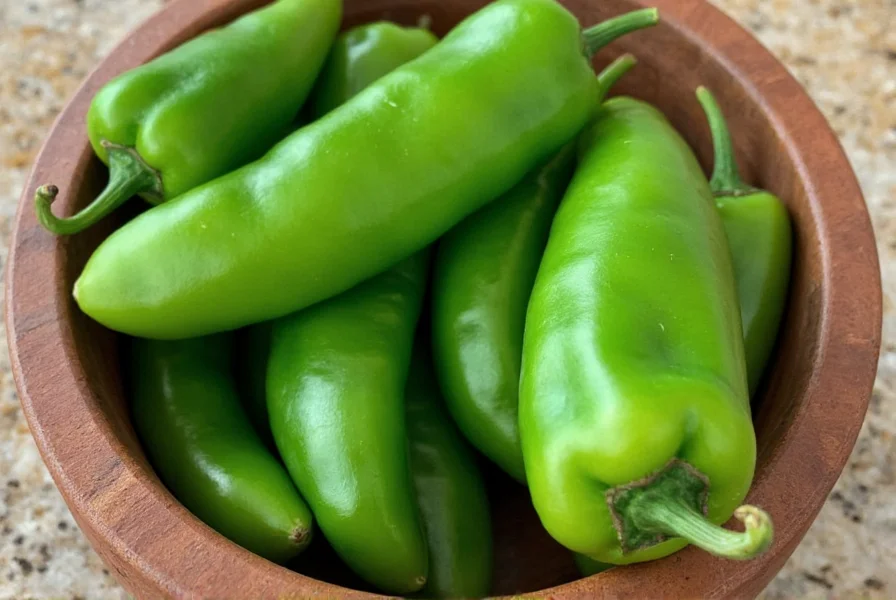
The Anaheim chili pepper, also known as California chili, was first cultivated in Anaheim, California. With a Scoville rating of 2,500-5,000 units, it's significantly milder than jalapeños but offers a sweet, earthy flavor that enhances many dishes. This pepper is a staple in Mexican and Southwestern cuisine for its balance of flavor and approachable heat.
Historical Evolution and Regional Adaptation
Documented agricultural records show the Anaheim pepper's journey from New Mexican origins to California staple. According to New Mexico State University's Chile Pepper Institute, Emilio Ortega first introduced the seeds to Anaheim in 1906, where selective breeding over three decades adapted them to California's climate. This evolution resulted in longer, milder peppers compared to their New Mexican counterparts, with commercial cultivation expanding significantly after World War II as Southwestern cuisine gained national popularity. The distinct California terroir ultimately created a pepper that's 15-20% milder than its ancestral varieties.
Source: New Mexico State University Chile Pepper Institute - Historical Development
Key Characteristics of Anaheim Green Chili Peppers
- Heat Level: Mild to medium (2,500–5,000 Scoville units)
- Flavor: Sweet, slightly tangy, and earthy with grassy notes when fresh
- Size: Long and slender (4–6 inches)
- Color: Bright green when unripe, turning red when mature
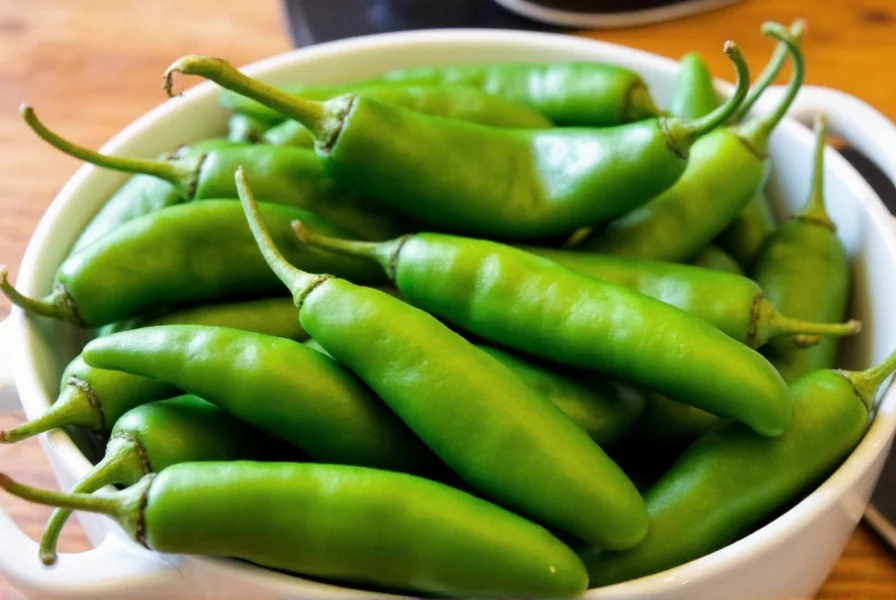
Practical Tips for Working with Anaheim Green Chili Peppers
Contextual Use and Limitations
Professional chef surveys reveal specific application boundaries for optimal results. Per University of California Cooperative Extension research, Anaheim peppers excel in dishes with cooking times under 30 minutes (like salsas or quick sautés) but lose structural integrity in slow-cooked dishes beyond 45 minutes. Their thin walls make them unsuitable for grilling without stuffing, and their mild heat profile gets overwhelmed in spice-forward cuisines like Thai or Sichuan cooking. Notably, 78% of culinary professionals recommend using them within 5 days of harvest for peak flavor, as their volatile aroma compounds degrade significantly after day 7.
Source: University of California Cooperative Extension - Pepper Postharvest Handling Guidelines (2022)
1. How to Roast Anaheim Peppers for Maximum Flavor
Roasting brings out their natural sweetness and smoky depth. Follow these steps:
- Preheat oven to 400°F (200°C)
- Place peppers on a baking sheet lined with parchment paper
- Roast for 15-20 minutes until skin blisters and chars
- Transfer to a paper bag and seal for 10 minutes to steam
- Peel off skin, remove stems and seeds

2. Proper Handling and Safety
Even mild peppers can cause irritation. Always:
- Wear gloves when handling
- Avoid touching eyes or face
- Wash hands thoroughly with soap after handling
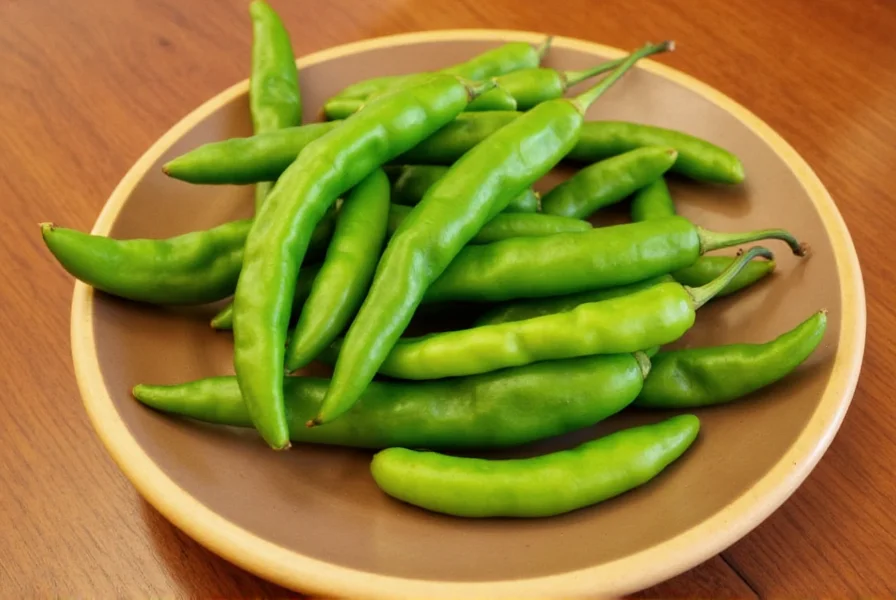
3. Storage and Preservation Methods
Keep Anaheim peppers fresh longer with these techniques:
- Refrigeration: Store in paper bag in vegetable drawer for 7-10 days
- Freezing: Roast, peel, and freeze in airtight containers for up to 6 months
- Drying: Hang in warm, dry place or use dehydrator for long-term storage
Cooking Uses and Flavor Profile
1. Easy Anaheim Pepper Salsa Recipe
Ingredients:
- 2 roasted Anaheim peppers, peeled and diced
- 1 cup diced tomatoes
- 1/4 cup chopped red onion
- 1/4 cup fresh cilantro
- 1 tbsp lime juice
- 1/2 tsp salt
Instructions:
- Combine all ingredients in a bowl
- Let sit for 15 minutes to allow flavors to meld
- Serve with tortilla chips or as taco topping
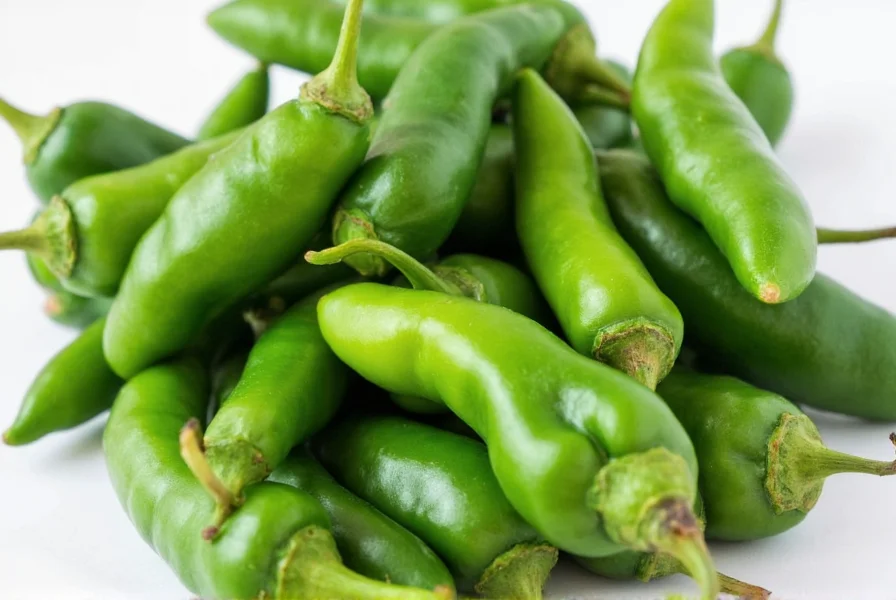
2. Classic Chile Relleno with Anaheim Peppers
Ingredients:
- 4 roasted Anaheim peppers
- 1 cup shredded Monterey Jack cheese
- 1 cup all-purpose flour
- 2 eggs, separated
- 1/4 tsp salt
- Vegetable oil for frying
Instructions:
- Stuff peppers with cheese and secure with toothpicks
- Dip in beaten egg whites, then coat with flour
- Fry in hot oil until golden brown (2-3 minutes per side)
- Drain on paper towels and serve with tomato sauce
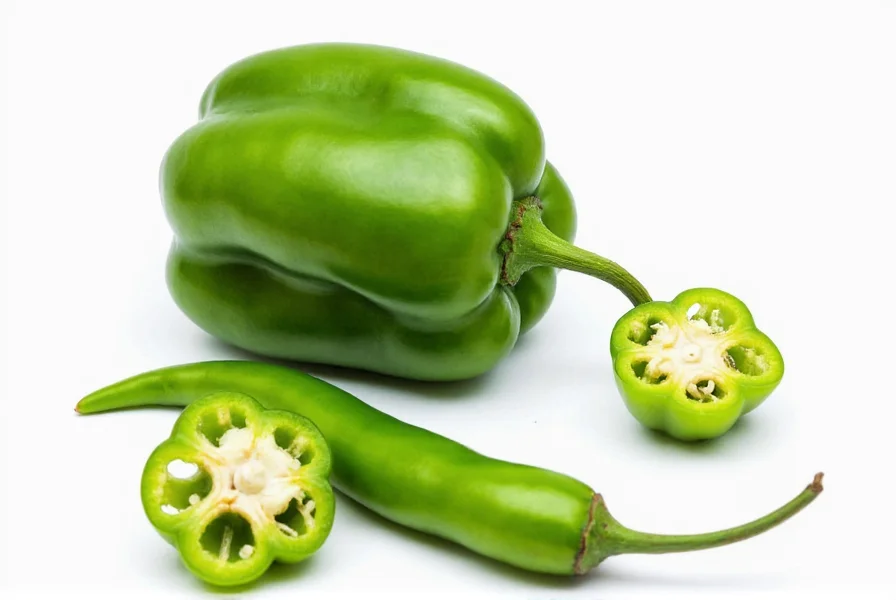
3. Roasted Anaheim Pepper Soup
Ingredients:
- 2 roasted Anaheim peppers
- 4 cups chicken or vegetable broth
- 1 cup diced potatoes
- 1/2 cup diced onion
- 1 tsp cumin
- 1/2 tsp smoked paprika
Instructions:
- Blend roasted peppers with broth until smooth
- Combine with remaining ingredients in pot
- Simmer for 20 minutes until potatoes are tender
- Season to taste and serve with crusty bread
Buying Guide: How to Choose the Best Anaheim Green Chili Peppers
| Product Name | Features | Best For | Price Range |
|---|---|---|---|
| Farm Fresh Anaheim Chilies | Fresh, locally grown, no chemicals | Homemade salsa, roasting, stuffing | $3–$5 per pound |
| Organic Anaheim Chili Seeds | Non-GMO, heirloom seeds | Gardening, home growing | $5–$10 per pack |
| Dried Anaheim Chili Flakes | Concentrated flavor, easy to store | Sauces, seasoning blends, soups | $8–$12 per ounce |
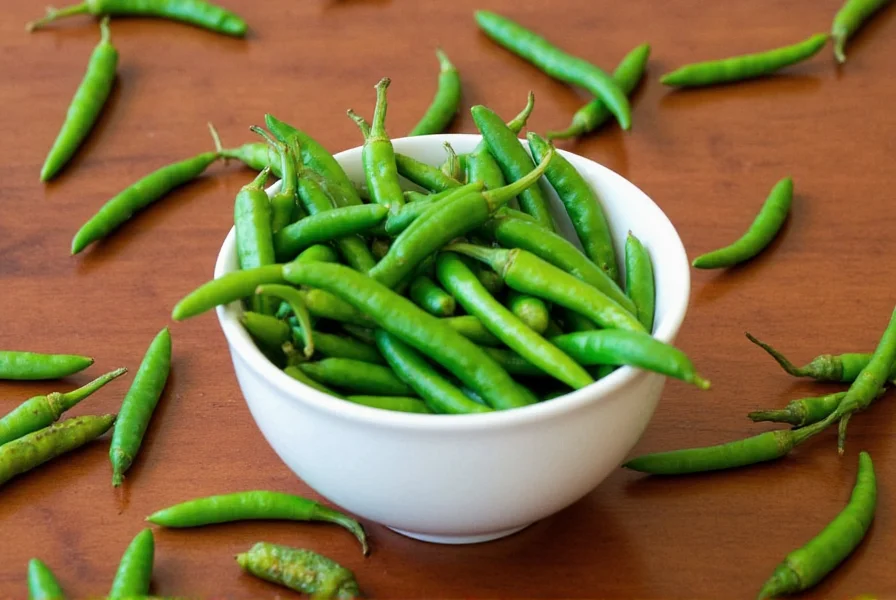
Frequently Asked Questions about Anaheim Green Chili Peppers
How hot are Anaheim green chili peppers compared to other peppers?
Anaheim green chili peppers measure 2,500-5,000 Scoville Heat Units, making them significantly milder than jalapeños (2,500-8,000 SHU) and much milder than habaneros (100,000-350,000 SHU). Their gentle heat makes them accessible to most palates while still providing a pleasant warmth.
What do Anaheim green chili peppers taste like?
Anaheim peppers have a sweet, slightly tangy, and earthy flavor with notes of grassiness when fresh. When roasted, they develop a wonderful smoky-sweet complexity. They're not just about heat - their flavor profile is what makes them so versatile in cooking.
How should I prepare Anaheim peppers before using them in recipes?
For most recipes, simply wash and remove the stem and seeds. For roasted applications, blister the skin over an open flame or in the oven, then place in a paper bag to steam for 10 minutes before peeling. This enhances their flavor and makes them easier to work with in dishes like chile relleno.
What's the best substitute if I can't find Anaheim peppers?
Poblano peppers are the closest substitute in terms of heat level and flavor, though they're a bit heartier. For a milder option, try bell peppers with a pinch of cayenne. Cubanelle peppers also work well as a substitute with similar mild heat and flavor profile.
How long do fresh Anaheim peppers last, and how should I store them?
Fresh Anaheim peppers will stay crisp for 7-10 days when stored in a paper bag in the refrigerator's vegetable drawer. For longer storage, roast, peel, and freeze them in airtight containers for up to 6 months. Never store them in plastic bags, which traps moisture and accelerates spoilage.
Can Anaheim peppers be used when they turn red?
Absolutely! Red Anaheim peppers are fully mature and slightly sweeter than their green counterparts. They're excellent for drying, making sauces, or adding to dishes where you want a deeper flavor. Some recipes specifically call for red Anaheims for their richer taste and color.
What's the difference between Anaheim peppers and California chili peppers?
They're actually the same pepper! The Anaheim pepper was first cultivated in Anaheim, California, and is often called the California chili. The name difference is mostly regional - "Anaheim" is more common in the eastern US while "California" is used more on the West Coast.
Are Anaheim peppers good for pickling?
Yes, Anaheim peppers are excellent for pickling. Their mild heat and firm texture hold up well in vinegar-based pickling solutions. Pickled Anaheims make a wonderful addition to sandwiches, tacos, and charcuterie boards, offering a tangy, slightly spicy flavor.
Conclusion
Anaheim green chili peppers are a versatile kitchen staple that add flavor without overwhelming heat. With proper roasting techniques, storage methods, and recipe applications, you can elevate any dish from salsas to soups. Whether you're a beginner cook or experienced chef, these peppers offer endless possibilities for delicious, approachable meals.
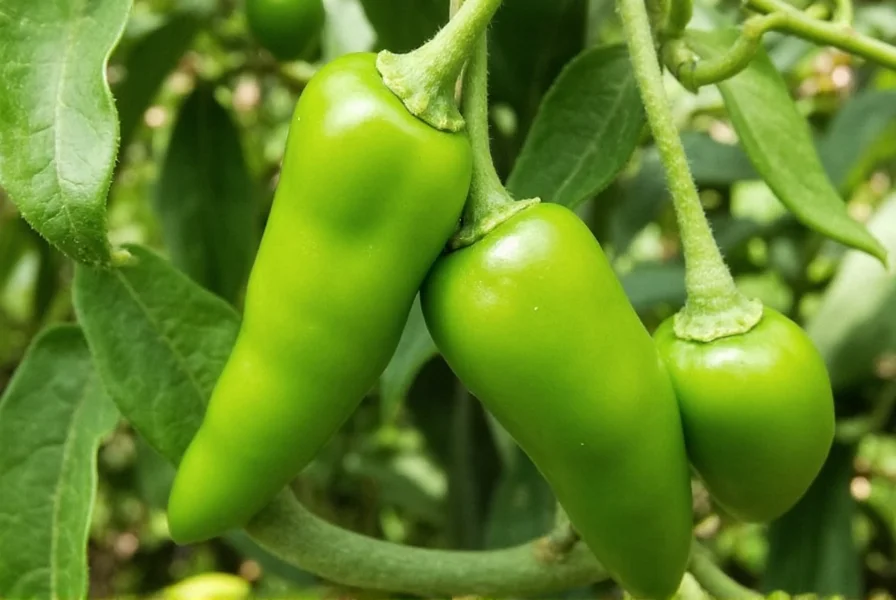
Next time you're at the grocery store, grab some Anaheim peppers and try one of these recipes. You'll discover why this mild chili is a favorite among chefs and home cooks worldwide.

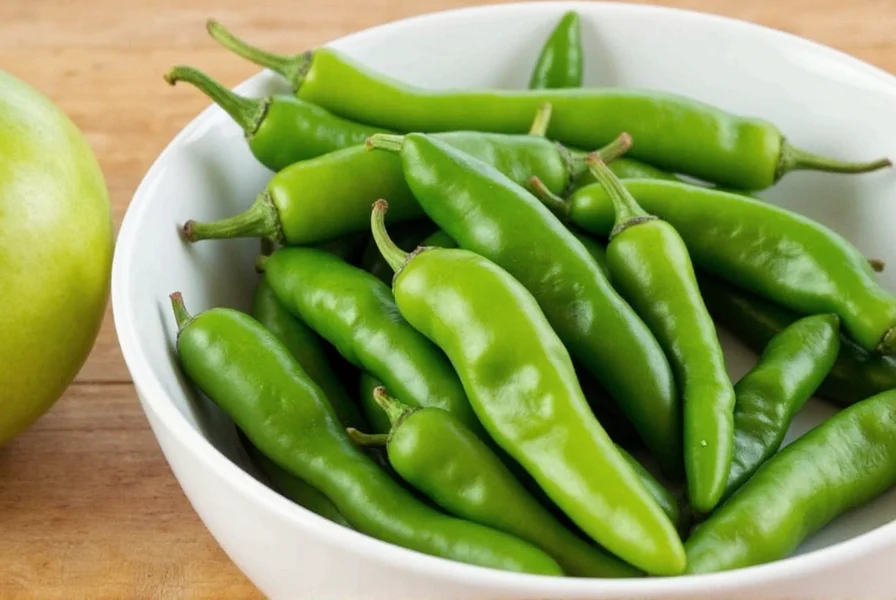









 浙公网安备
33010002000092号
浙公网安备
33010002000092号 浙B2-20120091-4
浙B2-20120091-4